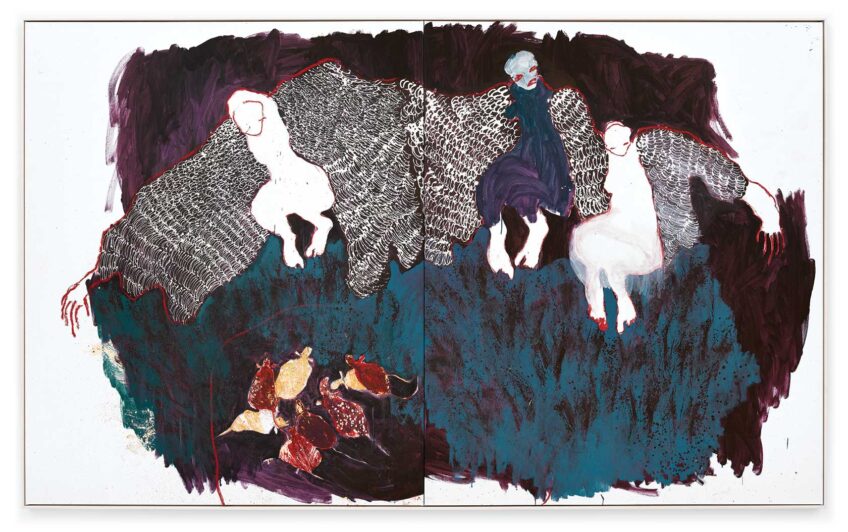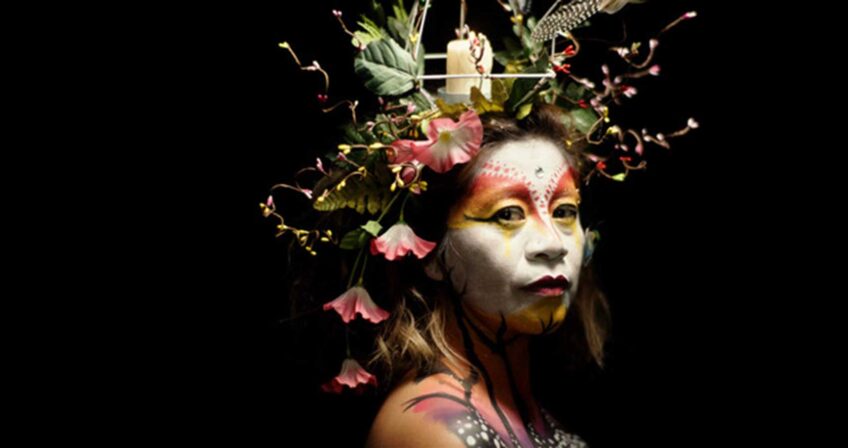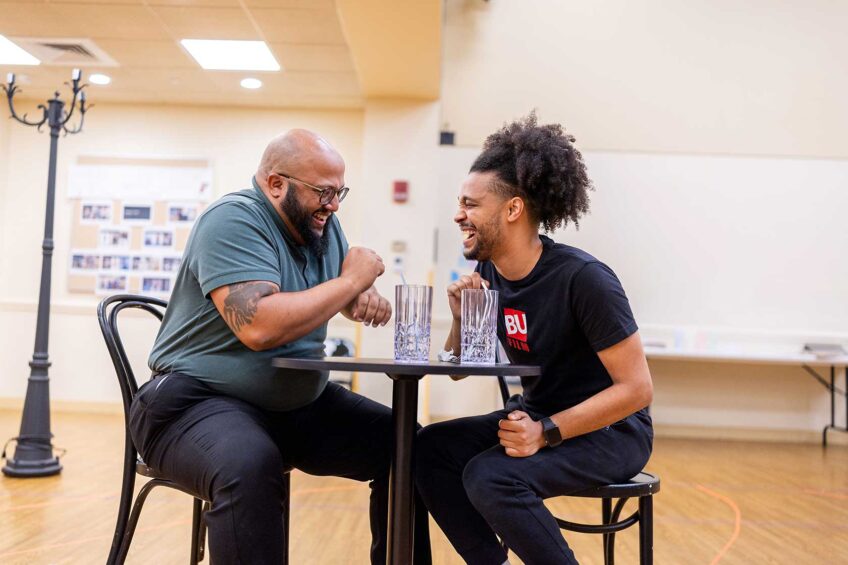
“The arts and culture should be weaponized,” says Allan Edmunds, founder of the Philadelphia-based Brandywine Workshop and Archives, where printmaking is both a fine art and a democratic force. “Art will save humanity. It’s one of the most powerful tools we have.”
One of the most riveting exhibitions in the Boston area this season is “Prints from the Brandywine Workshop and Archives: Creative Communities,” on view through July 31 at the Harvard Art Museums.

Betye Saar, American, “Mystic Sky with
Self-Portrait,” 1992. Offset lithograph with printed collage elements. Harvard Art Museums/Fogg Museum, Margaret Fisher Fund, 2018.33.50. © Betye Saar. IMAGE: COURTESY OF HARVARD ART MUSEUMS; © PRESIDENT AND FELLOWS OF HARVARD COLLEGE
Filling two large galleries with works by 30 artists representing a host of ethnic and geographic backgrounds, the exhibition celebrates Brandywine’s 50th anniversary. The workshop opened in 1972 as a collective of artists and art teachers in a two-story garage on Brandywine Street in North Philadelphia. Speaking in a video on Brandywine’s website, Edmunds, 73, recalls the startup year, when he drove around the city on trash days to forage for paper and furniture.
Now in ample quarters on Philadelphia’s Avenue of the Arts, Brandywine engages students, artists and art educators in the city and around the world with exhibitions, art residencies, classes and such resources as Artura.org, its free online database of culturally diverse artwork and artists.
In 2018, taking part in Brandywine’s initiative to place “satellite collections” in university art museums across the United States, the Harvard Art Museums acquired more than 80 of its prints.

Allan Edmunds, American, “200 Yrs,” 2008. Offset lithograph. Harvard Art Museums/Fogg Museum, Margaret Fisher Fund, 2018.33.7. © Allan Edmunds. IMAGE: COURTESY OF HARVARD ART MUSEUMS; © PRESIDENT AND FELLOWS OF HARVARD COLLEGE
Honoring Brandywine’s can-do community spirit, museum curators invited staff, students, and faculty campus-wide to write the show’s wall labels. Contributors include historian Tiya Miles, whose book “All That She Carried: The Journey of Ashley’s Sack, a Black Family Keepsake” won the 2021 National Book Award for nonfiction.
Renowned Black artists whose works are on view include Betye Saar, Faith Ringgold, Howardena Pindell and Janet Taylor Pickett.
In Pickett’s majestic “Hagar’s Dress” (2007), a simple matronly dress protectively encompasses rows of supine bodies, the human cargo of slave ships. Its title evokes the Old Testament slave who dares to encounter and name the divine, thanking “the God who sees me” for her liberation, and for her son, Ishmael, destined to become a patriarch and prophet.
Works by Saar and Pindell demonstrate the freedom of printmaking as a medium to tell one’s own story. Their captivating visual poems assemble images from a lifetime of memories and set them afloat in space. In a video chat with Edmunds, Pindell praises the liberating, boundary-breaking appeal of offset lithography, noting that it is often underrated as a medium of fine art.

Howardena Pindell, American, “Autobiography: Past & Present II,” 2005. Offset lithograph. Harvard Art Museums/Fogg Museum, Margaret Fisher Fund, 2018.33.45. © Howardena Pindell. Image: Courtesy of Harvard Art Museums; © President and Fellows of Harvard College.
Ringgold’s fairy-tale image of a country cottage, framed by hand-written text, honors a haven on the Underground Railroad. Larry Walker, the father of well-known contemporary artist Kara Walker, is represented by a fog-laden image of two figures.
This show’s abundance of intimate portraits includes an entire wall of black-and-white sketches by Sedrick Huckaby of his neighbors in Fort Worth, Texas, and raw, expressionist lithographs by Murray Zimiles from his “Holocaust” series.
A 2009 work by Hank Willis Thomas on paper made from elephant dung reproduces a poster for a slave auction. And a 2008 print by Edmunds spans 200 years of history, from slavery to the election of Barack Obama.






